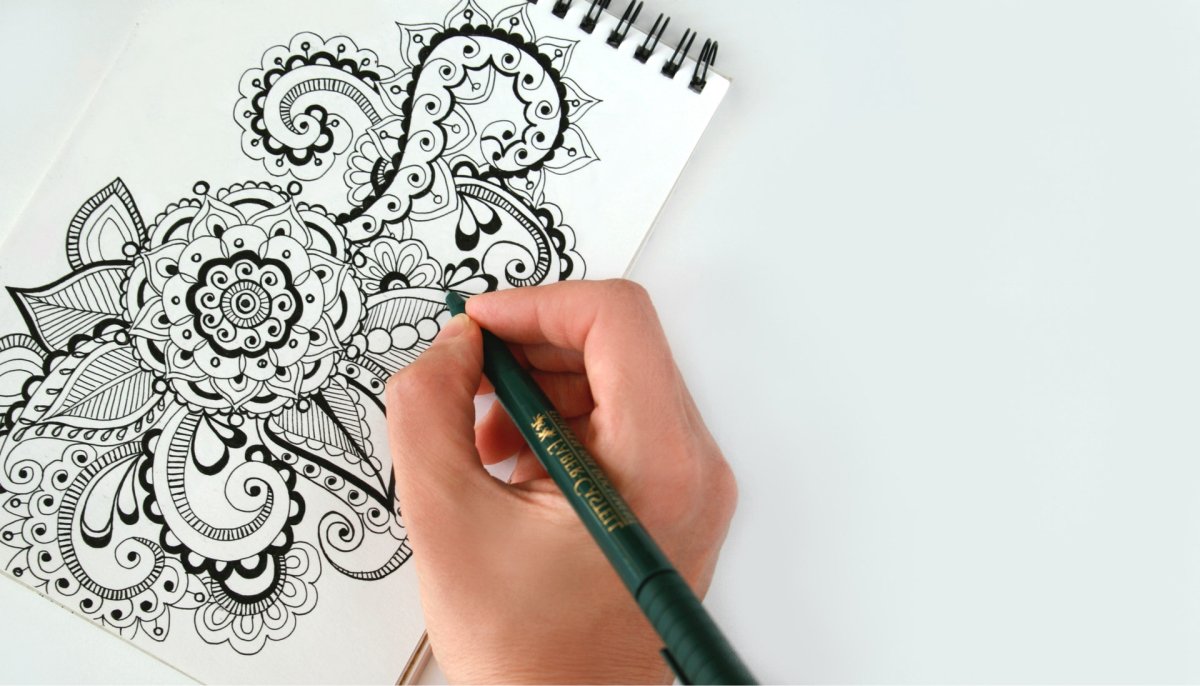Winter break is approaching for some, and for others, it has already begun. Whether you are a design student looking forward to time away from school after a hard semester or a seasoned professional looking forward to time away from endless Slack messages, the winter holidays can be a great time to unwind. Taking time away from work or school is necessary to avoid burnout, but what you choose to do on your vacation can have a big impact on your transition back. In order to keep up your design skills fresh during breaks, there are few things you should do.
Keeping your design skills up doesn’t have to mean checking in on the developer progress on your latest mobile app design from the beach, but instead can be about diving into other areas you’re passionate about, but don’t typically have time for. We’ve rounded up a list of what designers might do during winter break or any other time away from work or school, for that matter.
Key Suggestions for Fresh Design Skills
1. Design Content
There is no shortage of content out there for the curious designer. If you are an audio, visual, or even hands-on learner, there is something out there for you to explore. This could mean tuning into Debbie Millman’s Design Matters podcast or picking up a copy of Paul Rand’s A Designer’s Art. If you’ll be relaxing indoors or exploring a new city on foot, there are so many great sources of design inspiration out there to keep you company.
These design gems can teach you new techniques and even introduce you to schools of thought that you could never have imagined. All great ideas once existed on the fringe, so exposing yourself to as many ideas (in and outside of your design specialty) will be sure to get your creative brain going.

2. Museums
Nothing is created in a vacuum. The great artists, writers, and architects in history had their predecessors and peers to look to when thinking of their groundbreaking ideas. Luckily, modern-day designers don’t have to look too far when seeking out the best design work. Whether you spend time at London’s Design Museum, New York City’s Cooper Hewitt, Smithsonian Design Museum, or make it to the iconic Bauhaus Archiv in Berlin, there is so much to see. So many ways these new ideas can boost your design skills.
And art doesn’t have to be internationally renowned to get your ideas flowing. Pop into a local gallery or go on a walking tour in a new city to see new colors, concepts, and shapes.
3. Community
Design communities contain a wealth of knowledge and expertise. Rounding up a group of design friends is a sure way to find new creative solutions to what you’ve been working on recently. You might want to facilitate a design critique in which you present new ideas and designs to a welcoming group of professionals. This way, you can bounce ideas off of one another and get to the heart of what you want to create. This group of designers will ask the hard questions that force you to think about what you’re building it, who you’re building it for, and if your solution will actually meet your target audience’s needs.
On the contrary, getting outside of your design bubble also has its merits. After all, learning from friends who work in or study a different discipline can help you broaden your horizons and look at your designs from a fresh perspective. Design is a holistic field that requires input from so many stakeholders. Get ahead in your role by understanding varying needs at a deeper level. Bringing that to the table at work or school is one of the most invaluable design skills.
4. Passion Projects
Not everything you design has to be for your employer, professor, or client. We know that can be a radical idea, but sometimes it’s best to carve out some time to just explore seemingly random concepts that have been on your brain. Drawing out sketches of landscapes or prototyping a funny app idea just for the sake of it could lead to your next business idea or be cathartic. Both are incredibly valuable in different ways, of course. You deserve to have time to create whatever tickles your fancy. Breaks and vacations are the perfect time for that because there are much less priorities competing for your attention.

5. Freelance Work
Similar to passion projects, freelance work can give you the creative jolt you need. Getting a new set of goals and design constraints to workaround can help you produce your best work. This can be an excellent opportunity to learn new skills or produce items for your portfolio based on concepts you’ve honed in the classroom. So reach out to companies that interest you, let your network know you’re open to new projects, and reply to some job listings to get the process started.
6. Disconnecting
The internet is a great place at times. It enables the work of many designers around the world, but it can also be a rabbit hole that sucks up time with little value to show. So close your phone in a drawer and let your computer die. Sometimes putting pen to paper to let your mind wander by doodling or fully focusing on family and friends in your midst can be the best way to be present and absorb more from your environment. In such a connected world, we are often expected to always be reachable by phone, email, or Slack. But turning it all off to focus can lead to much more productive work than scrambling to respond to people across communication channels at odd hours.
7. Reflecting
Time away from your work is the perfect way to come back with a fresh pair of eyes. Because when you look at your designs day in and day out, you can lose sight of the nuances and even make small mistakes. Taking days or weeks to focus on other things helps you return with an upgraded vision and thought process.
Reflecting can be indirect and take your mind off of your day to day routine, or it can even be a structured process in which you look deeply at how your recent projects have gone and what you can do to improve in the future. A little introspection can go a long way. Ask yourself how you can make more of an impact on your company or school. Reflect on what success looks like to you and how you can become more effective in your role. Set goals for yourself and return to your routine with renewed purpose and drive to accomplish them.

8. Education
So far, we’ve talked about the things that designers can do during breaks from school or vacations from work. But it’s very important to acknowledge that not all breaks from design are voluntary. Maybe you were laid off or haven’t been able to find a job since graduating from design school. This type of break can create anxiety for many designers, but there are still ways to use your free time well.
Depending on what your budget is and the amount of time you can devote, there are a number of educational resources available to revamp your design skills. At the lower-priced end of the spectrum, you might enroll in a Coursera class or sign up for a design class at your local community college. If you’ve got a bit more to spend, you might attend a conference to expand your professional network or maybe take a coding class to make your resume more competitive in a job market that looks for unicorns that can do it all. There really is something for everyone, and if you’re just getting started, the design content section above is a good place to start. Figure out what interests you, then go as in-depth on the topic as you can to build up expertise.
Closing Thoughts
Whether you’re starting winter break as a student or taking a career break, having a gameplan is key to keeping your design skills up. All designers need to get distance from their work in order to foster new ideas. So take some time away from your keyboard and have experiences that are sure to get your creativity going.
How do you keep up your design skills during breaks? Let us know by tweeting us @Protoio.
Proto.io lets anyone build mobile app prototypes that feel real. No coding or design skills required. Bring your ideas to life quickly! Sign up for a free 15-day trial of Proto.io today and get started on your next mobile app design.






